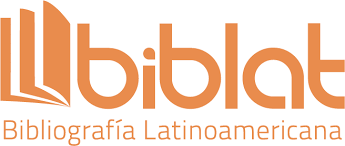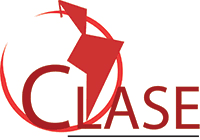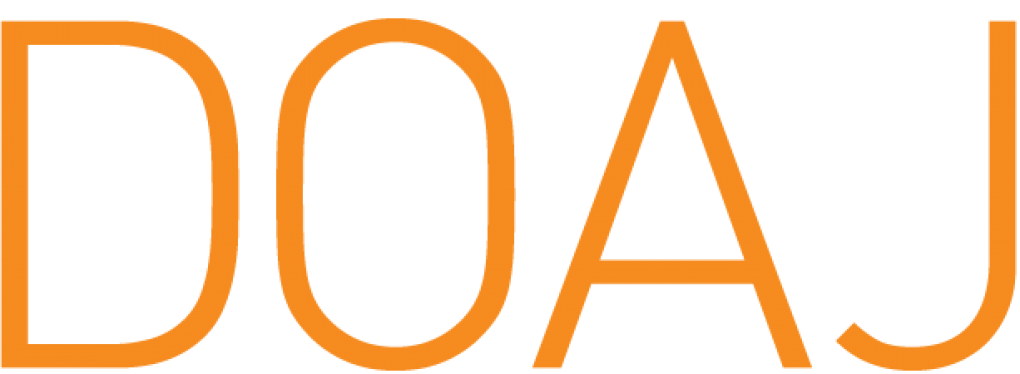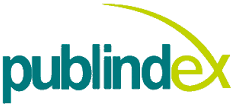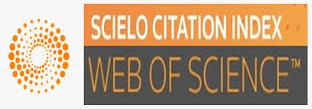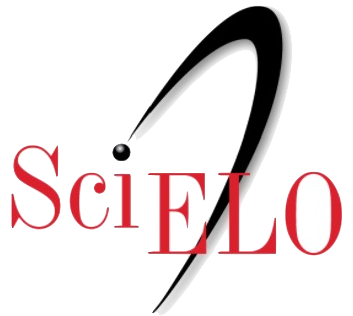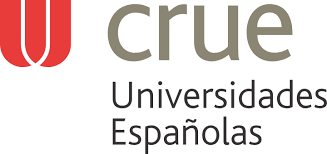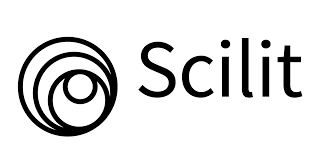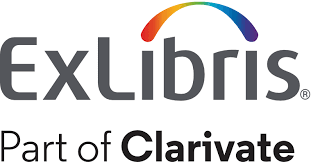Types of Knowledge in Resolution of Problems with Double Integrals, using Mathematic Software
DOI:
https://doi.org/10.22335/rlct.v6i3.670Keywords:
Superior teaching, Teaching of the mathematics, Assisted teaching by computer, Problem resolution, Educational technology.Abstract
The applied mathematics are the Science who let the development that engineering has reached; however, solving problems had been the headache for students, due to the lack of virtual environments that let the development of concepts, skills, and procedures. The project aims to describe the application of different types of knowledge in problems resolutions of doubles integrals in students who make use of mathematic software in comparison to the traditional teaching. The labor had as a reference the theory of two stadiums translation and solution to solve problems according to Mayer. The investigation was quasi-experimental type. Is highlighted in the results difficulties in the translation phase because it showed a lower level toward the lecture comprehension, specifically of mathematic language in the students; although it evidenced that the 18% of students who approved the exam “pretest”, while the 69% approved the exam “posttest”; It concludes about the importance of use of the mathematic software in the learning of vectoral calculus towards the problems resolution with double integrals; although, it reflected a positive change of the student by developing the activities with the use of the software.
Downloads
References
Ardila-Rodríguez, M. (2011). Indicators of the Quality of Digital Educational Platforms. Educación y educadores, 14(1).
Artigue, M., & Ervynck, G. (1993). Proceedings of Working Group 3 on Students’ Difficulties in Calculus. ICME 7.
Ávila-Fajardo, G., & Riascos-Erazo, S. (2011). Proposal for the measurment of TIC impact in college teaching. Education and Educators, 169-188.
Ávila-Fajardo, G., & Riascos-Erazo, S. (2011). Propuesta para la medición del impacto de las TIC en la enseñanza universitaria. Educación y Educadores, 14(1), 169-188.
Barb, C., & Quinn, A. (1997). Problem solving does not have to be a problem. . The Mathematics Teacher, 90(7)., 536-542.
Buitrago-Pulido, R. (2015). Incidencia de la realidad aumentada sobre el estilo cognitivo: caso para el estudio de las matemáticas. . Educación y Educadores, 18(1)., 27-41.
Camarena, P. (2006). La matemática en el contexto de las ciencias en los retos educativos del siglo XXI. Científica, 4(10)., 167-107.
CCSSO, C., & NGA, N. (Septiembre de 2010). Common Core State Standards for Mathematics. Obtenido de http://www.core standards.org/assets/CCSSI_Math%20Standards.pdf.
Committee on Standards for K-12 Engineering, E., & National Research, C. (2010). Standards for K-12 Engineering Education? Washington, D.C.: National: Academies Press.
Cooper, S., Dann, W., & Pausch, R. (2000). Alice: a 3-D tool for introductory programming concepts. In Journal of Computing Sciences in Colleges (Vol. 15, No. 5), 107-116.
Descaves, A., & Butlen, D. (1999). Introduction du symbolisme à la fin de l’école élémentaire et au début du collège. In Actes du 26ème Colloque de la Corirelem.
Eisenberg, T. (2002). Functions and associated learning difficulties. . In Advanced mathematical thinking , 140-152.
G, & Galloway, P. (2007). Engineering Education Reform. Civil Engineering (08857024), 77(11), 46-51.
Goldsmith, L., Doerr, H., & Lewis, C. (2014). Mathematics teachers' learning: A conceptual framework and synthesis of research. Journal of Mathematics teacher education, 17 (1), 5-36.
Guacaneme-Mahecha, M., Gómez-Zemeño, M., & Zambrano-Izquierdo, D. (2016). Apropiación tecnológica de los profesores: el uso de recursos educativos abierto. Educación y Educadores, 19 (1), 105-117.
Hernández, R. (2016). Mathematical errors in procedural knowledge when solving quadratic surface problems. Revista Logos Ciencia & Tecnología, 8(1), 67-76.
Hernández, R. (2016). Tipos de conocimiento hacia la resolución de problemas en funciones vectoriales asistido por software matemático. Saarbrücken, Alemania: Editorial Académica Española.
Kashefi, H., Ismail, Z., & Yusof, Y. (2010). Obstacles in the learning of two-variable functions through mathematical thinking approach. . Procedia-Social and Behavioral Sciences, 8., 173-180.
Kashefi, H., Ismail, Z., Yusof, Y., & Rahman, R. (2011). Promoting Creative Problem Solving in Engineering Mathematics through Blended Learning. In Engineering Education (ICEED), 2011 3rd International Congress on IEEE.
Leonard, W., Gerace, W., & Dufresne, R. (2002). Problem resolution based on Analysis. Teaching of Sciences, 387-400.
Louis, L. (2009). The Epistemic Implications of Engineering Rhetoric. Synthese, (3), 333 - 358.
Mayer. (1986). Thinking, problem solving, cognition. Traducido por Graziella Baravalle. Barcelona: Edicionaes Paidos. p. 480.
Mayer, R. (2014). Incorporating motivation into multimedia learning. Learning and Instruction, 29., 171-173.
Mayer, R., Lewis, A., & Hegarty, M. (1992). Mathematical misunderstandings: Qualitative reasoning about quantitative problems. Advances in psychology, 91, 137-153.
Morrison, J. (2012). A Reading Strategy Approach to Mathematical Problem Solving. Illinois Reading Council Journal, 40(2), 31-42.
NCTM, N. (2000). Principles and standards for school mathematics. Reston, VA: NCTM.
Ortega, M., Duarte, H., & Lozano, J. (2016). Desarrollo del pensamiento en estudiantes de cálculo integral su relación con la planificación docente. Revista Científica, 3(23), 17-29.
Ortega, M., Lozano, J., & Tristancho, S. (2015). APPS en el rendimiento académico y autoconcepto de estudiantes de ingeniería/Apps in the academic achievement and engineering student self. Revista Logos Ciencia & Tecnología, 6(2), 198-208.
Paivio, A. (2006). Dual coding theory and education. In The Conference on Pathway. s to Literacy Achievement for High Poverty Children, 1-20.
Perkins, D. (1999). ¿ Qué es la comprensión? La enseñanza para la comprensión, 69-92.
Rahman, R., Yusof, Y., Ismail, Z., Kashefi, H., & Firouzian, S. (2013). A new direction in engineering mathematics: Integrating mathematical thinking and engineering thinking. In Proceedings of the Research in Engineering Education Symposium , 1-7.
Rasmussen, C., & Blumenfeld, H. (2007). Reinventing solutions to systems of linear differential equations: A case of emergent models involving analytic expressions. . The Journal of Mathematical Behavior, 26(3), 195-210.
Sabagh Sabbagh, S. (2008). Solution of written arithmetic problems and inhibitory cognitive control. Universitas Psychologica, 7 (1), 217 - 229.
Schwarzenberger, R. E. (1980). Why calculus cannot be made easy. The Mathematical Gazette, 64., 158-166.
Skemp, R. (1987). The psychology of learning mathematics. Psychology Press.
Sweller, J., Clark, R., & Kirschner, P. (2010). Mathematical Ability Relies on Knowledge, Too. American Educator, 34(4), 34 - 36.
Tall, D. (1993). Students’ obstacles in Calculus, Plenary Address, Proceedings of Working Group 3 on Students’ obstacles in Calculus. ICME7, 13-28.
Toro-Carvajal, L., Ortíz-Álvarez, H., Jimenez-García, F., & Agudelo-Calle, J. J. (2012). Los sistemas cognitivos artificiales en la enseñanza de la matemática. . Educación y Educadores, 15 (2)., 167-183.
Willcox, K., & Bounova, G. (2004). Mathematics in engineering: Identifying, enhancing and linking the implicit mathematics curriculum. In Proceedings of the 2004 ASEE Annual Conference & Exposition, Session (No. 2465).
Yudariah, M., & Roselainy, A. (2004). Teaching engineering students to think mathematically. In Conference on Engineering Education , (CEE 04).
Published
Issue
Section
License
This journal provides free and immediate access to its content (https://creativecommons.org/licenses/by/4.0/legalcode#languages), under the principle that making research available to the public free of charge supports greater global knowledge exchange. This means that the authors transfer the Copyrights to the journal, so that the material can be copied and distributed by any means, as long as the authors’ recognition is maintained, and the articles are not commercially used or modified in any way.

